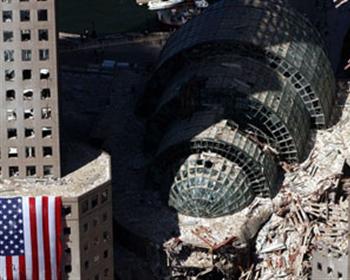Most of us use the Underground every day as a crowded, claustrophobic way of getting from A-B. It is unique in terms of transport in that you cannot see where you are going and many passengers would be hard-pressed to find their way between destinations walking overground. When taking the Tube you are effectively lost in an underworld that often seems bland and soulless. Yet, as many passenger and staff have discovered over the years, it is anything but…
The disused stations have, perhaps unsurprisingly, been implicated in many of the Tube’s ghostly tales. Aldwych station on The Strand was closed in 1994, although it is currently enjoying a renaissance as a part-time art gallery and venue for the uber-trendy. One guest who doesn’t usually bother waiting for an invitation is a figure regularly seen by the ‘fluffers’, staff who clean the tunnels. It’s said that the figure is the ghost of an actress who continues to take her curtain calls on the site of the old Royal Strand Theatre.
The British Museum station closed its platforms for good on 25th September 1933. Local rumours were rife that the station was haunted by the spirit of an Ancient Egyptian who would appear impressively dressed in a loincloth and headdress late at night. The story grew in popularity to the extent that one newspaper offered a reward for anyone brave or foolhardy enough to stay the night down there with the station’s exotic visitor. Funnily enough, there were no takers.
In 1935, two years after the station’s closure, the comedy thriller ‘Bulldog Jack’ used the legend as its premise and fuelled the rumours with the addition of a secret tunnel leading from the station to the Egyptian Room at the Museum. On the night of the film’s release, two women disappeared from the platform at Holborn, the next station down from disused British Museum. Investigations revealed mysterious marks on the walls of the closed station. Further sightings of the ghost were reported and people claimed to hear strange moaning from within the tunnel walls. The story was hushed up and London Underground continued to deny any existence of the mythical tunnel between the station and the Egyptian Room.
Perhaps the Tube’s most famous ghost is of actor William Terris who was fatally stabbed on The Strand in December 1897. It’s said that he regularly visited a baker’s which stood on the site of Covent Garden station. This could perhaps explain why staff on The Underground have reputed seeing a tall man in a frock coat, tall and hat and gloves pacing the tunnels as far back as the 1950s. Patrolling the platforms was one thing but when he appeared in the staff rest room, workers demanded a transfer.
Elephant & Castle also has a firmly-established ghostly reputation. When it’s closed at night, staff have reported hearing the steps of an invisible runner along the platform, strange tapping noises and doors being thrown open without apparent cause.
The BBC’s website bears the testimony of a tube driver who encountered the type of passenger who doesn’t need a ticket:
‘So I join the train at the terminus at Elephant and Castle and walk forward to the front of the train with a view to travelling with the driver. At this point the driver has not arrived so I put my bag down and move to the rear door to wait for him. While I am waiting a girl gets in the carriage – she walks straight through the carriage and I have to move aside… A minute or so later the driver turns up, and we move toward the front of the train. I notice that the girl is not in the carriage and this is a rather immediate cause for concern – she could not have left the train without passing me – I had full view of the carriage and platform at the time. My reaction was to inform the driver – the only place she could have gone was to have walked down the tunnel – not really what we want! The driver’s response was unusual: “Oh, her. We hear about her all the time – she’s even been in the papers.”’
Even the poshest stations have their problems. At South Kensington station in December 1928 a passenger on the last westbound tube of the evening reported hearing an ear-splitting whistle. An unscheduled train appeared with a ghostly figure wearing a reefer jacket and peaked cap hanging off the side of the engine. The train disappeared into the tunnel and has not been sighted since.
It shouldn’t come as a surprise that many strange tales are associated with the Underground. It is after all more than 140 years old, 253 miles long and carves its way beneath London’s most historic sites, disturbing what was laid to rest centuries ago. A case in point is the London Depot on the Bakerloo Line. At the south end lie two tunnels; one exits to the line at Elephant & Castle, the other to a dead end to stop runaway trains. Behind the wall lies one of London’s many plague pits dug in the Bubonic crisis of the 17th century. No ghostly activity has been reported but few staff are willing to go down there, particularly at night. Plague pits have proved something of a hindrance in building the Underground, firstly because they were dug so deep to prevent spread of infection and secondly because no-one knows how many there are or where they are located. The Victoria Line, built in the late 1960s ran into trouble when the tunnel boring machine went straight into a long-forgotten plague pit at Green Park.
So the next time you’re hopping on the Tube bear all of this in mind and remember that, while you’re looking at the destination board for the next train, you can’t see who – or what – is behind you. Mind the Gap? Mind the Ghost…

